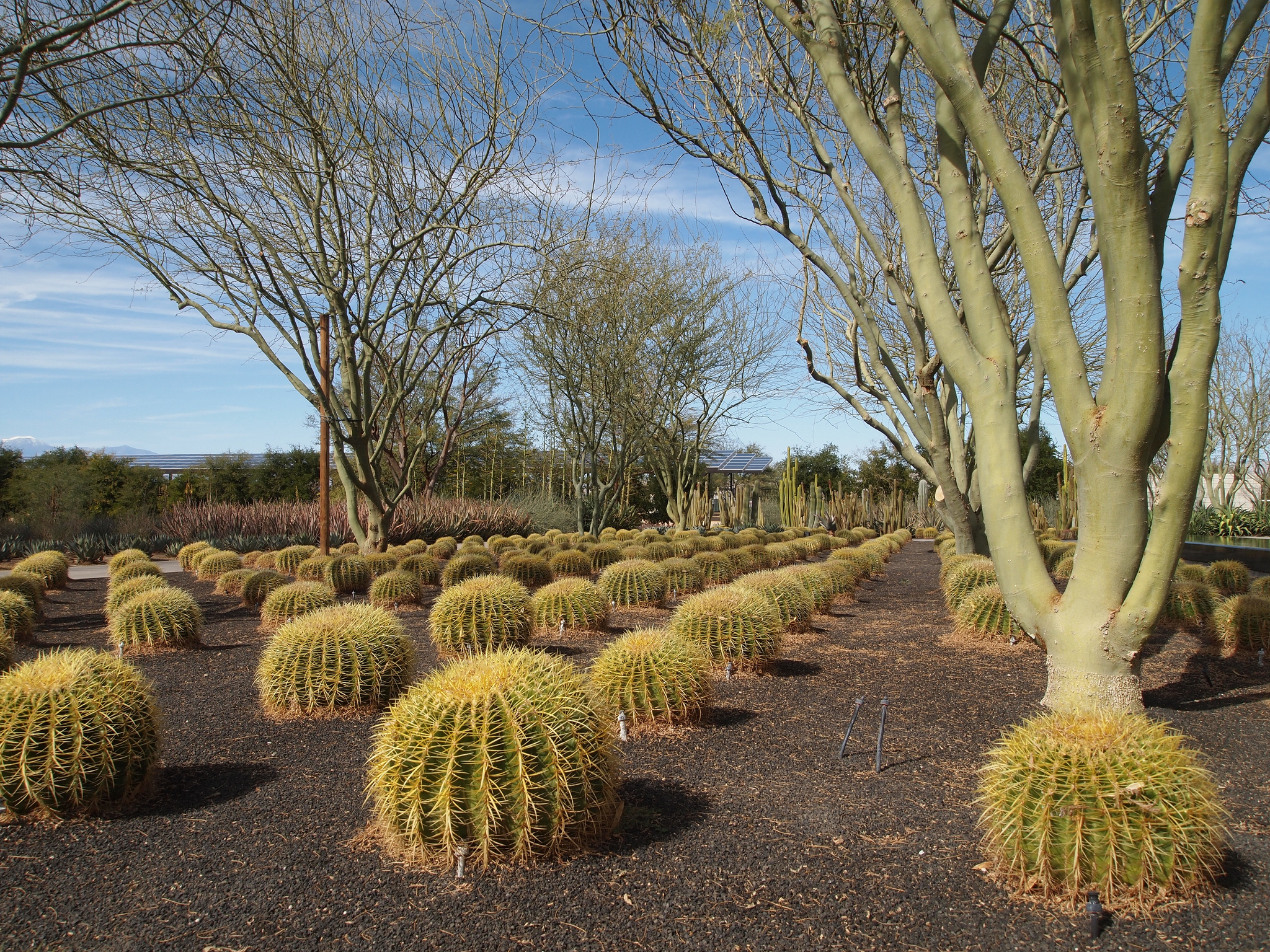Garden Inventory is a series where I begin an inventory of all the plants and trees in my garden. Along with some of my own pictures, I will link to various sources of information about each plant and tree so we can learn a little more together. As part of the Dog Days of Podcasting, and in order to expand the videos available on my YouTube Channel, this installation of Garden Inventory includes a companion video.
Garden Inventory: Common Fig (Ficus carica)
These trees pop up like weeds around here’d, due to the number of birds that eat the seeds and then drop them everywhere. Unlike other problematic volunteers here in Los Angeles, there is, at least, the possibility that they might produce edible fruit. We have several good fruiting trees in the neighborhood and usually have a least one growing in this location in the garden, directly below a power pole where birds like to perch.
I have removed several figs from this location, but since my wife like them, I am thinking of keeping this one and just keeping it pruned more closely, so it doesn’t threaten to take over the entire garden.
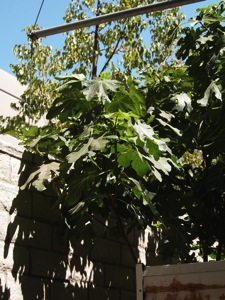
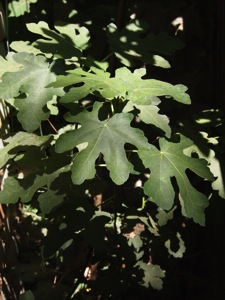
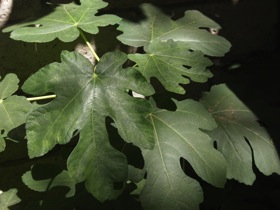
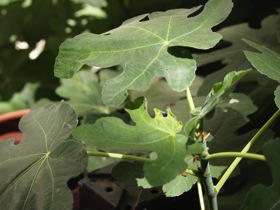
Photo of Common Fig (Ficus carica) with closeups of leaves and growing habit.
The common fig (Ficus carica) is a species of flowering plant in the genus Ficus, from the family Moraceae, known as the common fig (or just the fig), انجیر (Urdu),அத்தி (Tamil), anjeer (Hindi), dumur (Bengali), תאנה (Hebrew) and تين (Arabic). It is the source of the fruit also called the fig, and as such is an important crop in those areas where it is grown commercially. Native to the Middle East and western Asia, it has been sought out and cultivated since ancient times, and is now widely grown throughout the temperate world, both for its fruit and as an ornamental plant.[1][2]
The common fig tree has been cultivated since ancient times and grows wild in dry and sunny areas, with deep and fresh soil; also in rocky areas, from sea level to 1,700 meters. It prefers light and medium soils, requires well-drained soil, and can grow in nutritionally poor soil. Like all fig trees, Ficus carica requires wasp pollination of a particular species of wasp (Blastophaga psenes) to produce seeds. The plant can tolerate seasonal drought, and the Middle Eastern and Mediterranean climate is especially suitable for the plant. Situated in a favorable habitat, old specimens when mature can reach a considerable size and form a large dense shade tree. Its aggressive root system precludes its use in many urban areas of cities, but in nature helps the plant to take root in the most inhospitable areas. Common fig tree is mostly a phreatophyte that lives in areas with standing or running water, grows well in the valleys of the rivers and ravines saving no water, having strong need of water that is extracted from the ground. The deep-rooted plant searches groundwater, in aquifers, ravines, or cracks in the rocks. The fig tree, with the water, cools the environment in hot places, creating a fresh and pleasant habitat for many animals that take shelter in its shade in the times of intense heat. — Wikipedia.org
More information on Common Fig (Ficus carica):
- Common Fig (Ficus carica) on Wikipedia
- Common Fig (Ficus carica) at Missouri Botanical Garden
- Growing and Maintaining Your Fig at About.com
Previously on Garden Inventory:
- Carrrotwood (Cupaniopsis anacardioides)
- Asiatic Dayflower (Commelina communis)
- Honey Locust (Gleditsia triacanthos)
- Aucuba japonioca variegata (Gold Dust Plant)
- Clytostoma callistegioides
- Ficus repens
- Lantana
- Sword Fern (Polystichum munitum)
- Lemon
- Redwood (Sequoia sempervirens)
- Ficus benjamina
- Ash Tree (Fraxinus)
- Black Pine (Pinus nigra)
- Snowflakes (Leucojum)
- Ming Fern Asparagus (Aspargaus retrofractus)
- Paperwhites (Narcissus papyraceus)
- Azalea
- Nandina domestica (Heavenly Bamboo)
- Eucalyptus



